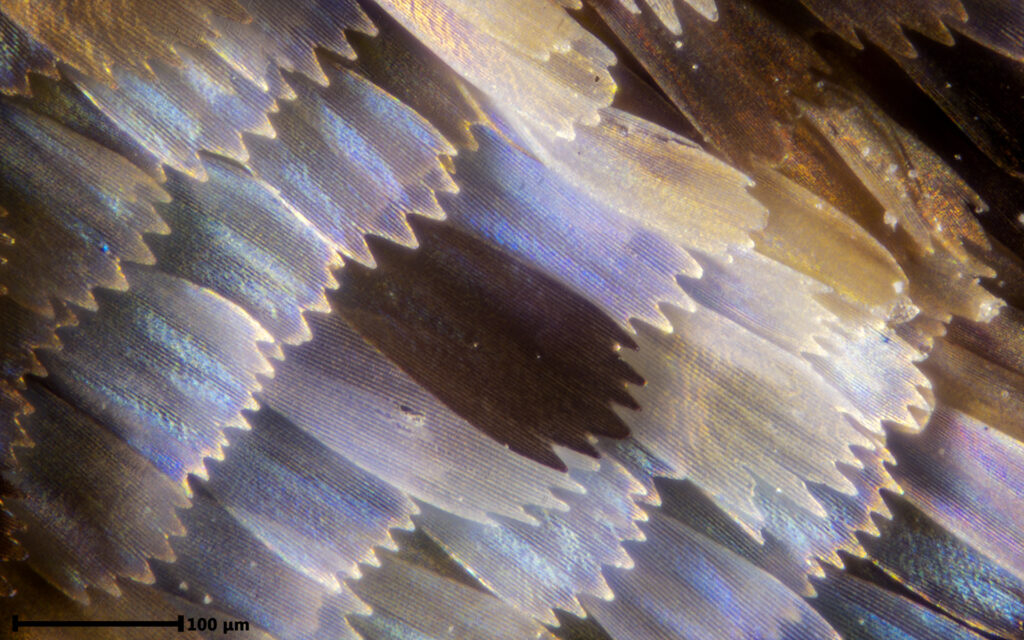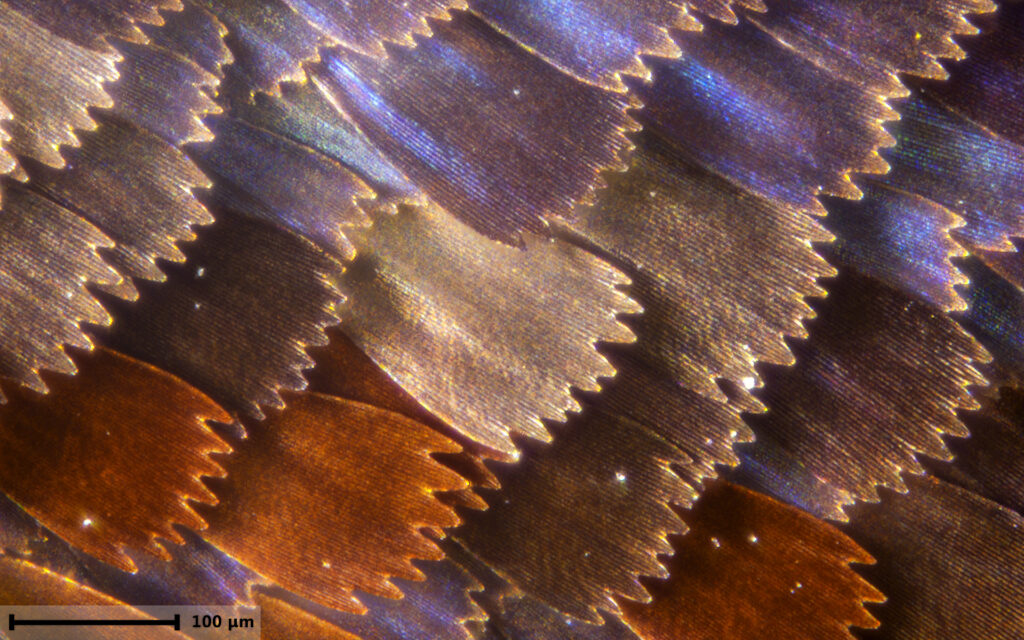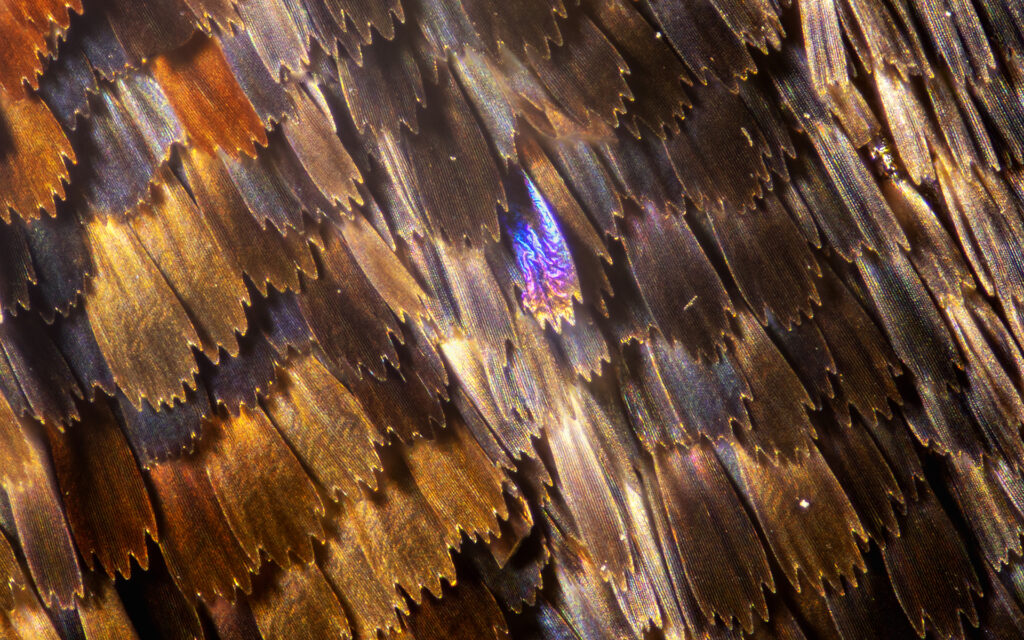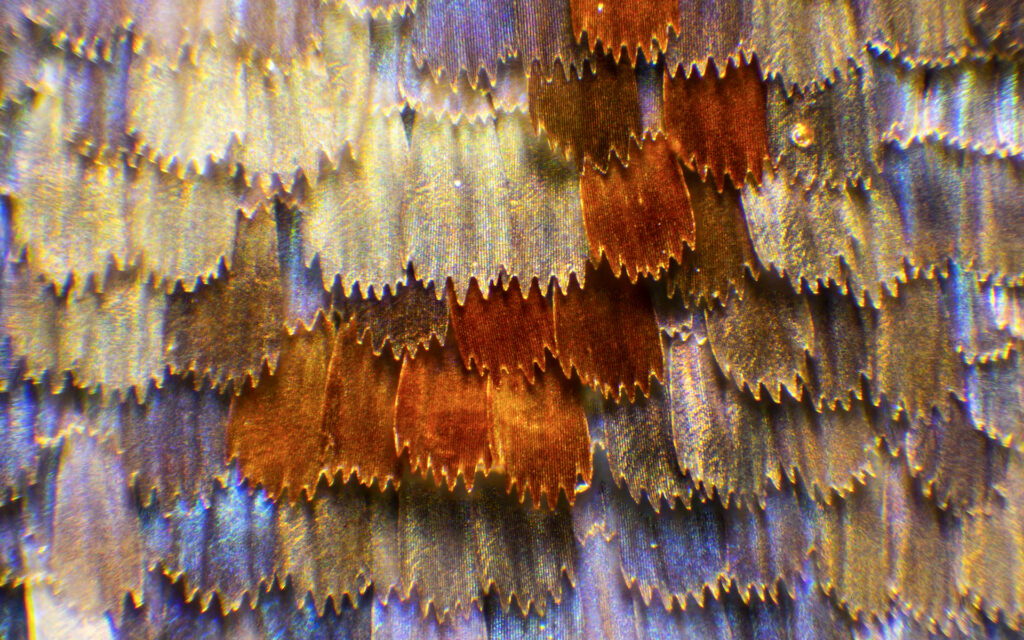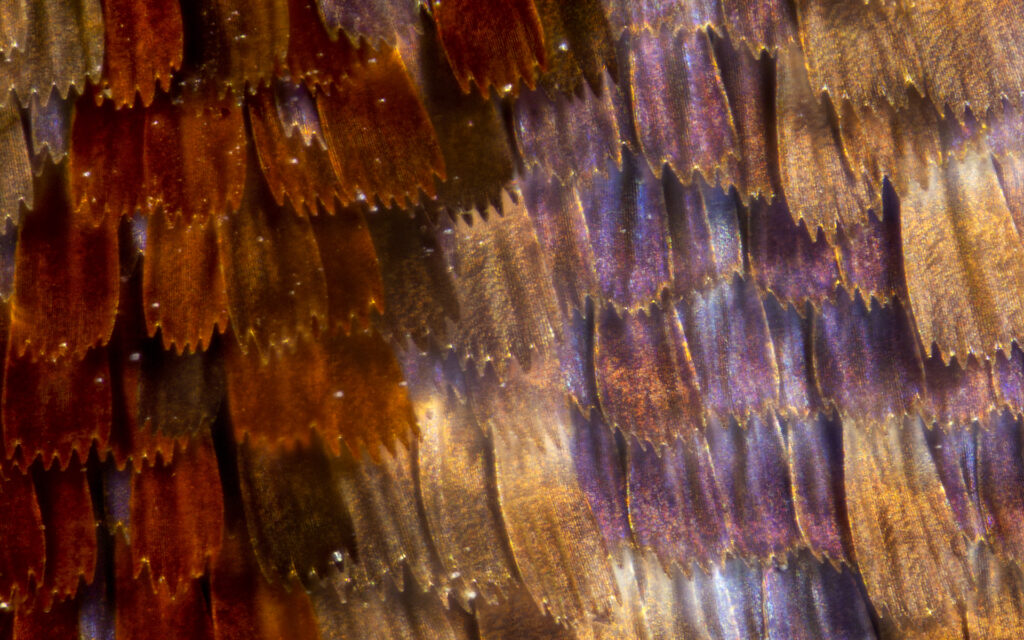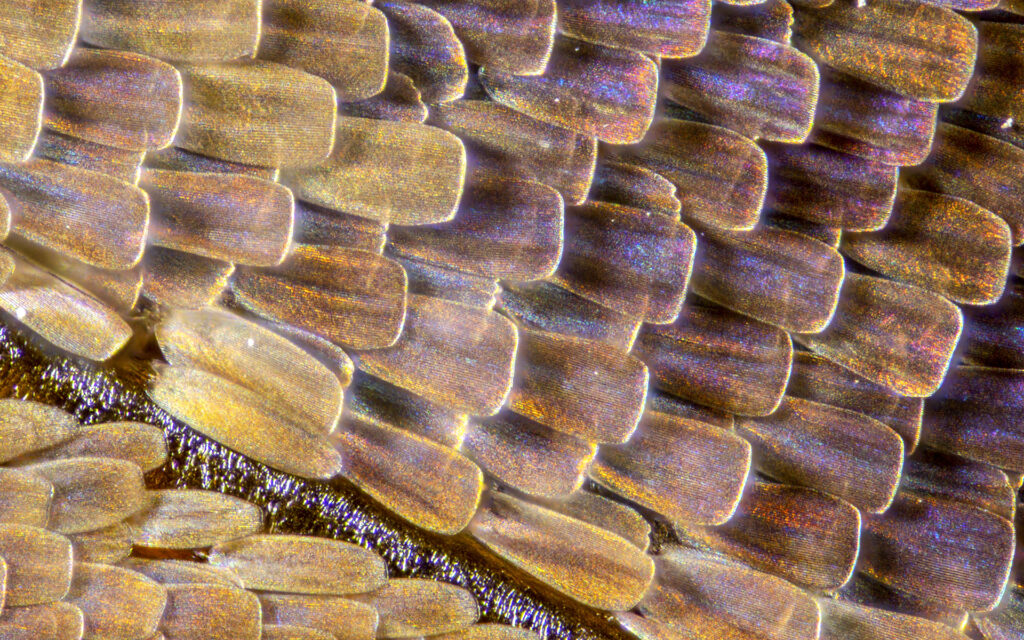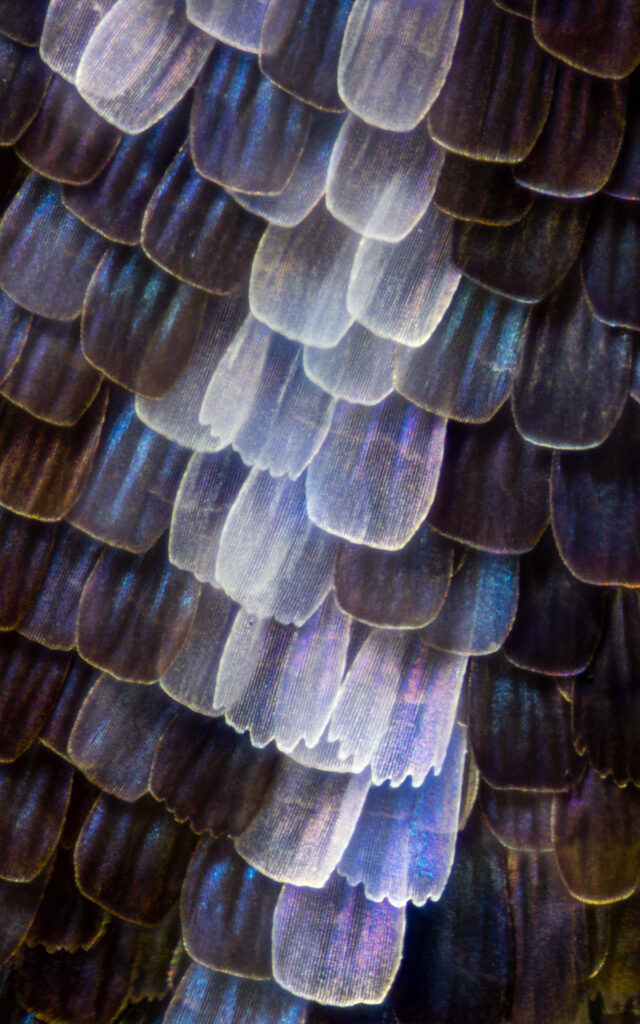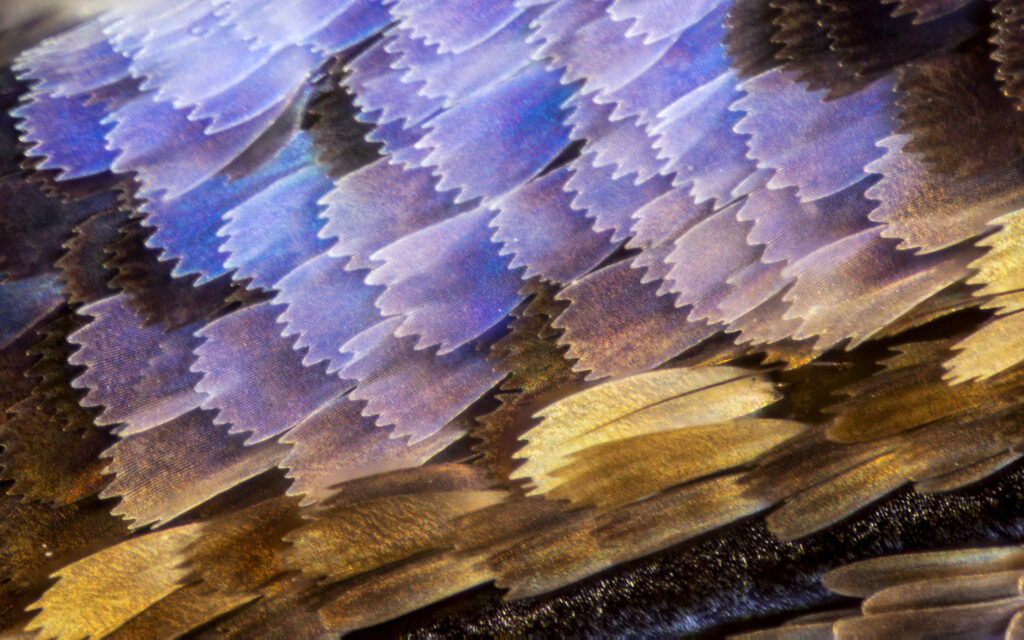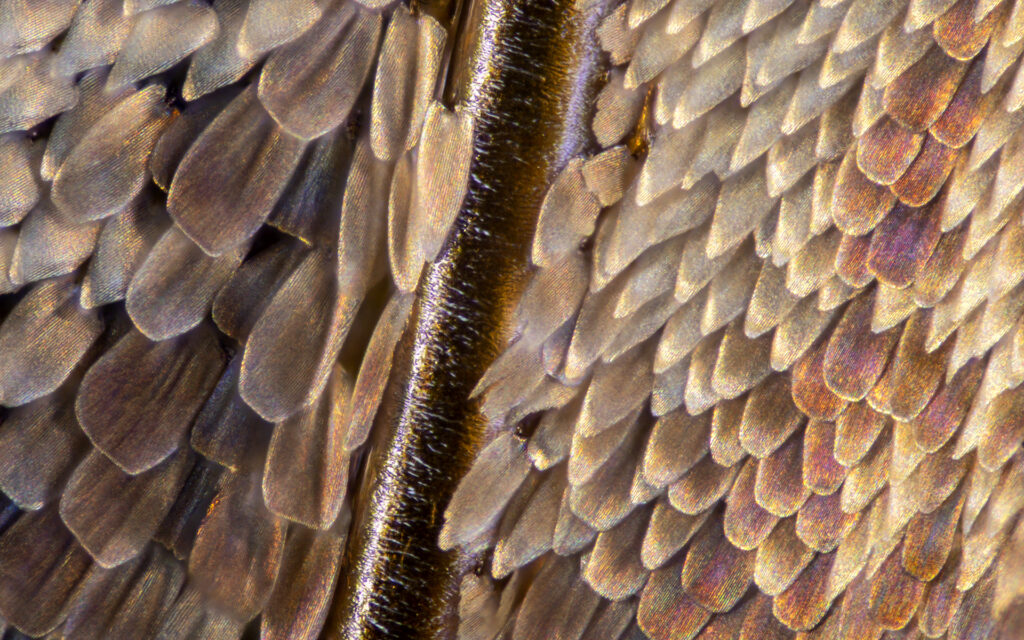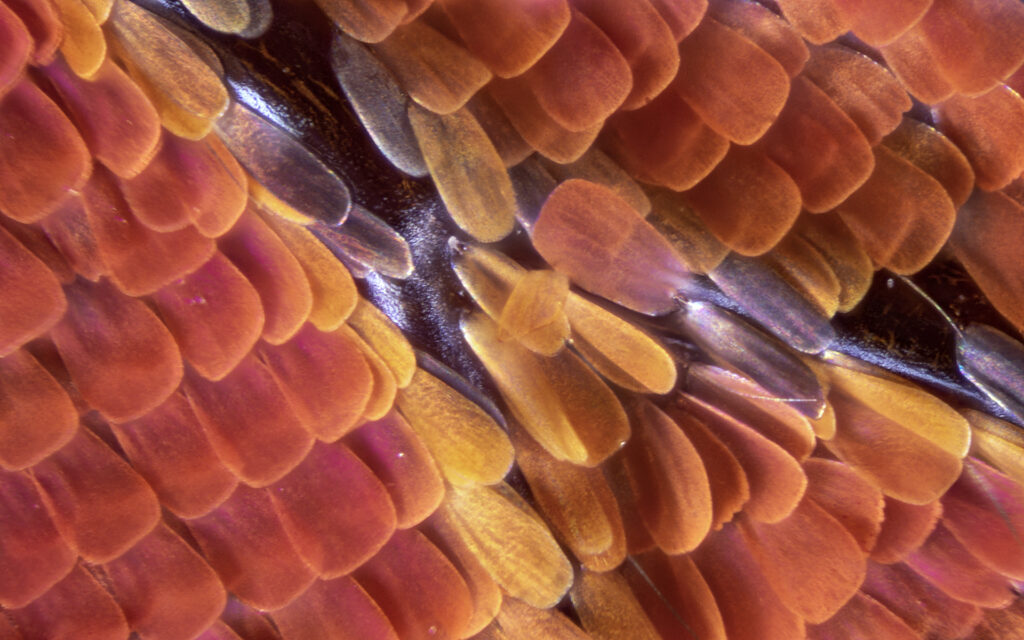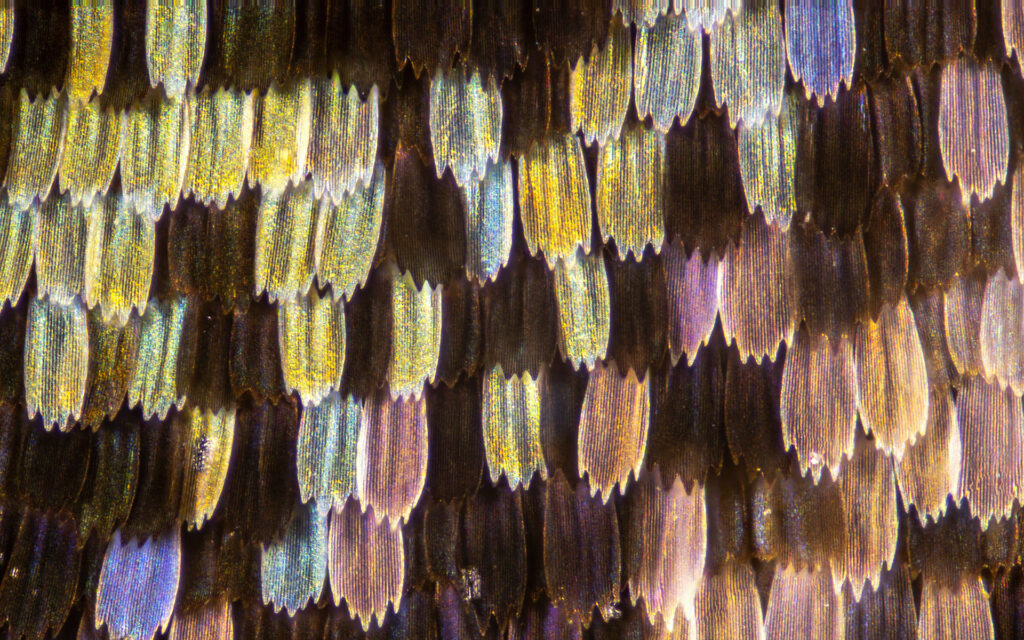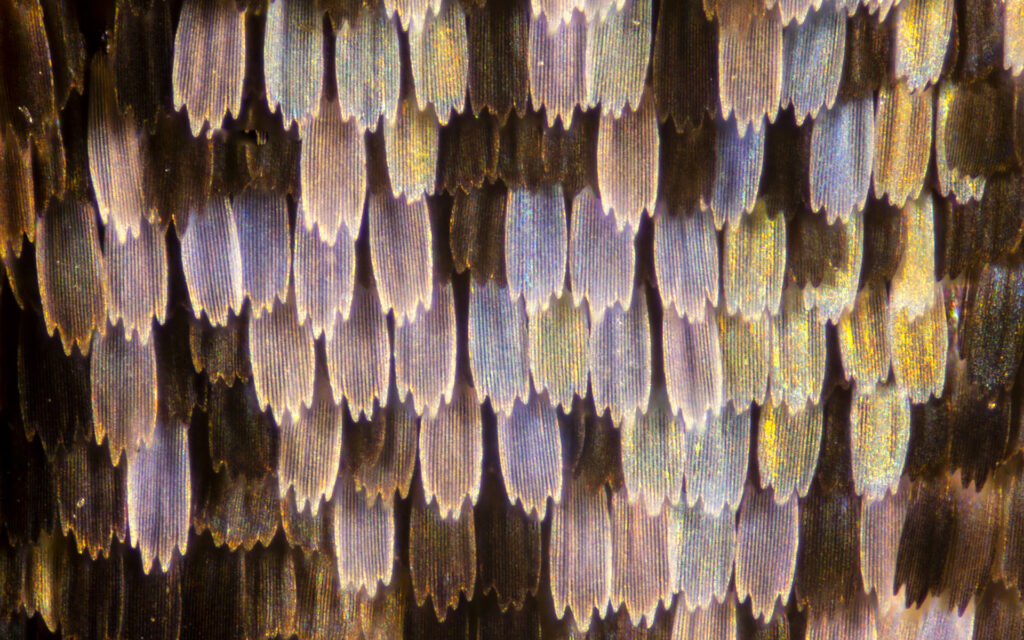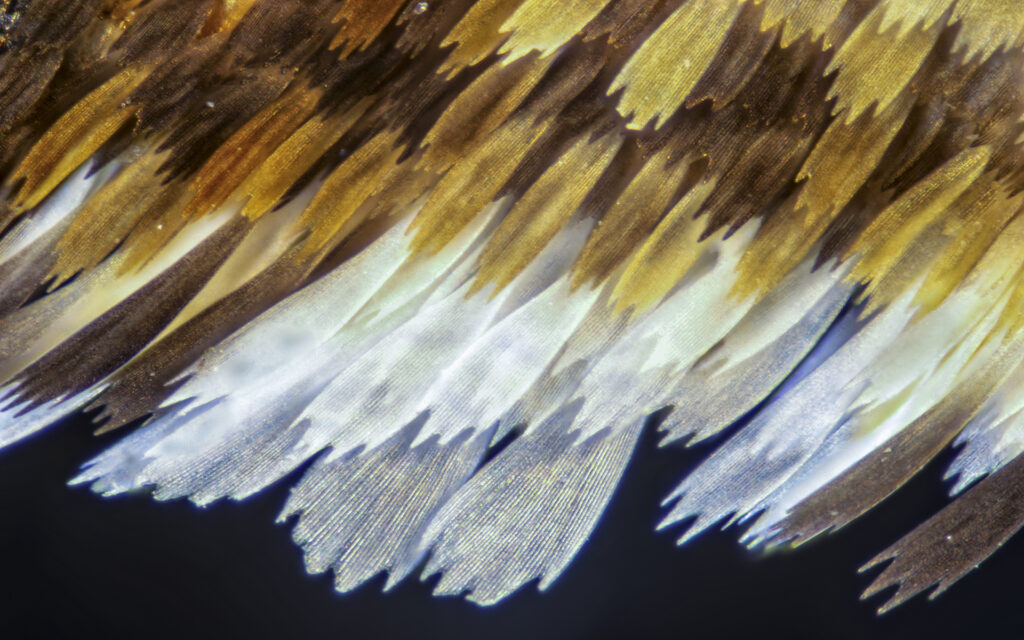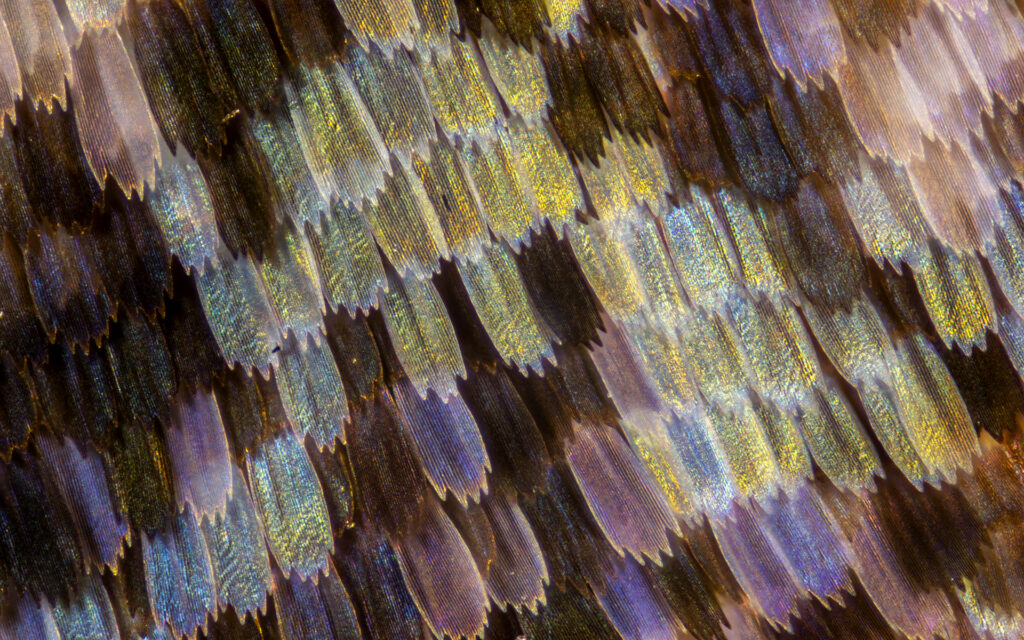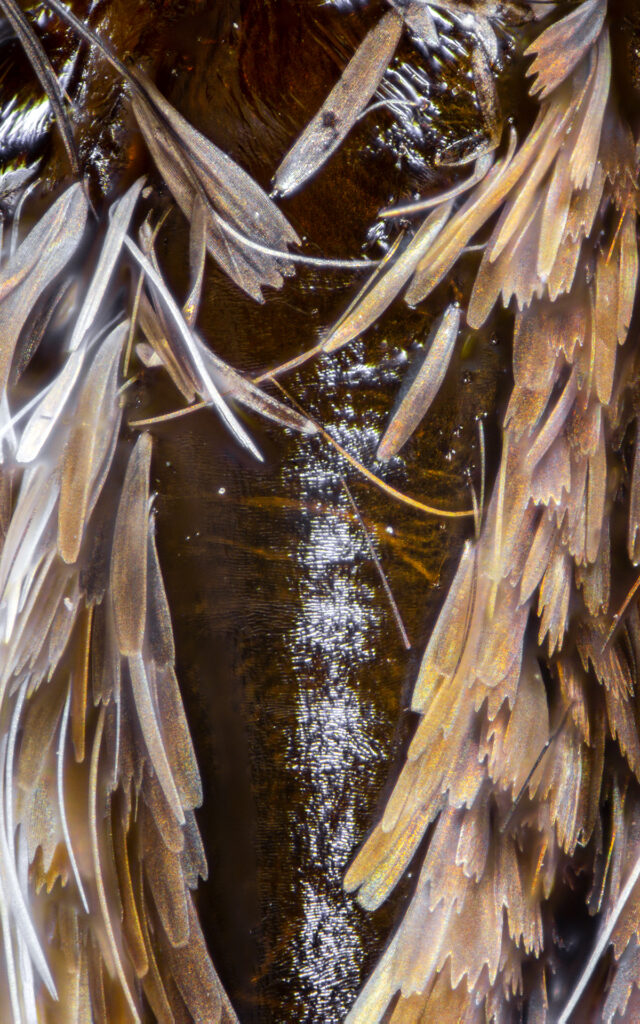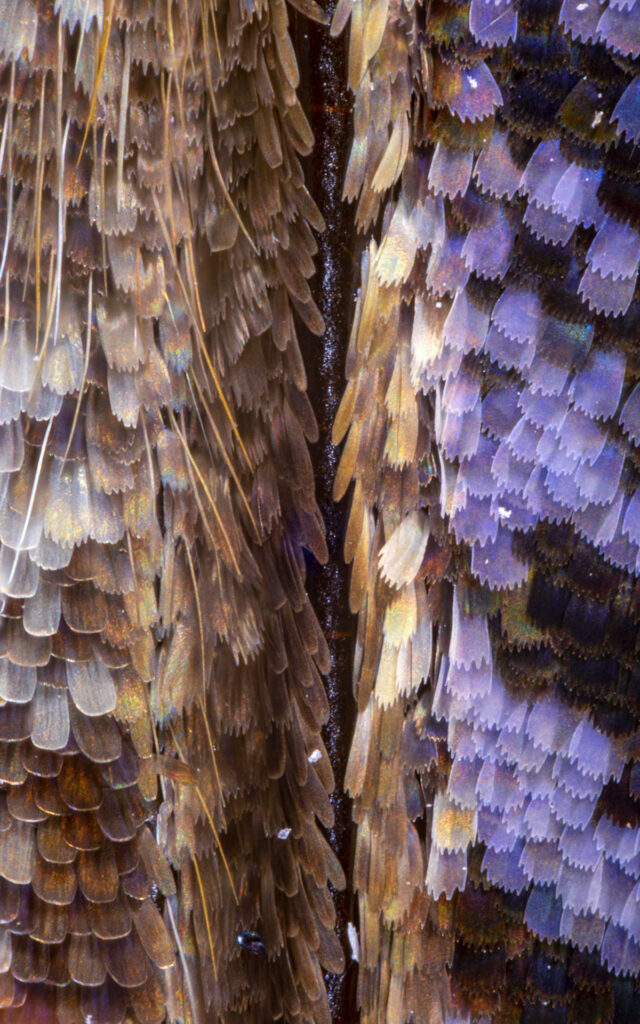During my walks along the local roadsides this season I’ve only found one example of the Red Admiral butterfly, Vanessa atalanta. It’s a little tattered and it had lost its head at some point, but it was still very beautiful under my microscope. Their scales display a wide range of colours not individually visible to the naked eye at a normal viewing range.
The shots above depict portions of the ventral side of the fore wing. These areas appear to be a finely mottled grey-brown, but they’re really comprised of rich reds, golds and lilac purple. The iridescence of the scales causes a surprisingly metallic looking surface from some angles, but they remain translucent from others.
Butterflies scales or setae occur in a wide variety of shapes and sizes, as well as vivid colours. I enjoy trying to capture and document these features. Every millimeter of them seems adapted to make the most of the breeze while also providing some protection for the animal. This isn’t surprising to me but it’s pleasant to observe directly.
These are also shots from the ventral side of fore and hind wings. The stacks on this page all range from 300-900 exposures each, with so many needed due to the height or depth of some of the subjects.
Below are two of my attempts to capture the wonderful multi-coloured iridescence of the bright scales scattered across the otherwise dark and drab cells of the ventral hind wing. I was so captivated by these subtle colours that I also shot some stacks that didn’t quite make it in terms of the quality I’m looking for, and I’ll probably return to them again.
Of the butterflies we still consider common in Ontario I can think of few as photogenic on the microscopic scale as Vanessa atalanta and its cousin, V. cardui, the Painted Lady. A close runner up in my opinion would be Polygonia interrogationis, the Question Mark.
And a few more, because these scales keep pulling me back. These range from 660-1200 exposures.
There are more Red Admiral photos from last year on this page.
